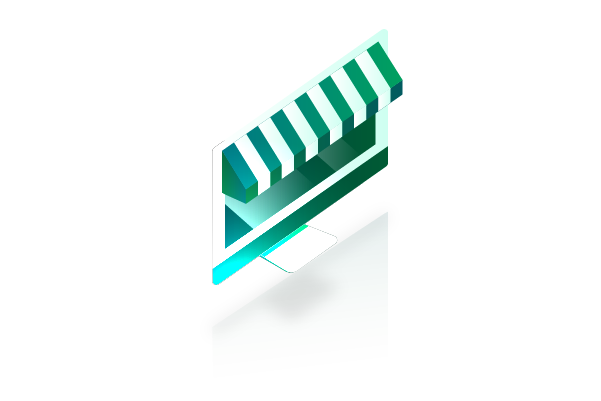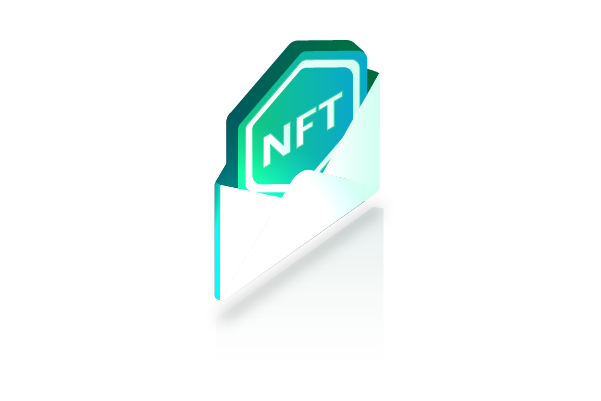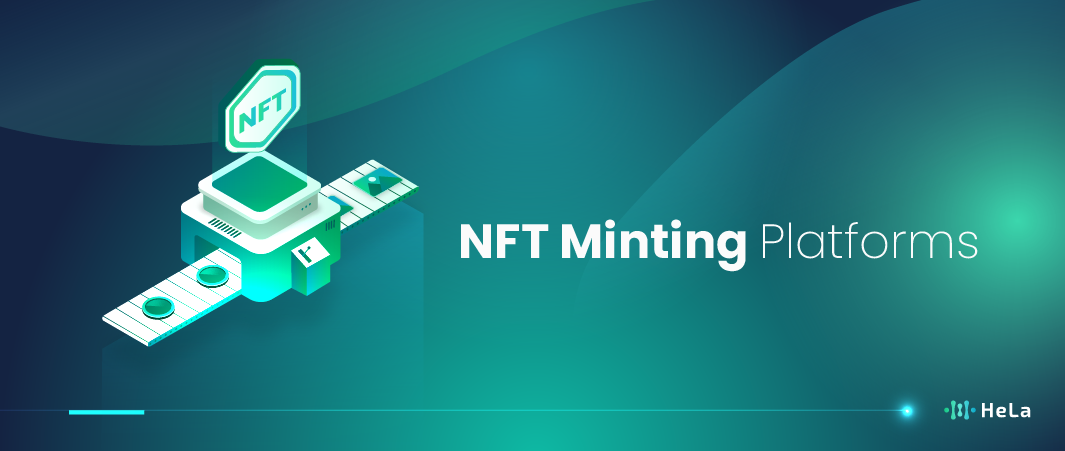As we step into 2026, the landscape of NFT minting platforms continues to expand, offering an array of features tailored to the needs of the modern digital artist and collector. This article will guide you through the top 10 NFT minting platforms in 2026, ensuring that you are well-equipped to make informed decisions in this vibrant and dynamic market.
As we delve into the top NFT minting platforms of 2026, we’ll explore not only the features and benefits of each but also the broader implications of NFTs in the creative industry. From copyright concerns to the democratization of art, the world of NFTs is as complex as it is fascinating. So, let’s embark on this journey together, exploring the platforms that are shaping the future of digital ownership and creativity.
The Impact of NFTs on Digital Creativity
The emergence of Non-Fungible Tokens (NFTs) has indeed marked a revolutionary shift in the digital creative sphere, offering unprecedented opportunities and altering the dynamics of art creation, ownership, and distribution. As a unique digital asset that represents ownership or proof of authenticity of a specific item or piece of content, NFTs leverage blockchain technology to ensure the uniqueness and security of digital creations. This transformation has multiple facets, each contributing to the reshaping of the creative landscape:
- Democratization of Art: NFTs have lowered the barriers to entry for artists. Independent creators, who may have previously struggled to find a platform or audience, can now reach global markets. This democratization extends beyond established artists to novices and underrepresented groups, fostering diversity and inclusion in the art world.
- Provenance and Authenticity: The blockchain technology underlying NFTs ensures the provenance of digital art, enabling artists to claim ownership and buyers to verify authenticity. This addresses a long-standing issue in the digital art space – the ease of duplication and distribution without proper attribution or compensation.
- New Economic Models: NFTs introduce new ways for artists to monetize their work. Artists can receive royalties automatically through smart contracts every time their art is resold, ensuring ongoing compensation in line with the value their work generates over time.
- Community and Engagement: NFT platforms often come with built-in social features, creating communities around artists and collectors. This fosters a sense of belonging and engagement, encouraging collaboration, feedback, and a supportive ecosystem that was harder to achieve in traditional art markets.
Also Read: What Is BscScan? Features, Functions, and Insights
- Innovation in Art Forms: The digital nature of NFTs encourages innovation in art forms. Artists are not just selling digital versions of traditional art, but also creating new forms of interactive, dynamic, or multimedia art that can only exist and be owned as NFTs.
- Impact on Physical Art: The influence of NFTs is not confined to the digital realm. The rise of NFTs has started to influence the traditional art market as well, with physical artworks being tokenized to ascertain ownership and authenticity.
- Challenges and Criticisms: While the impact of NFTs is largely positive for creators, it’s also important to acknowledge the challenges. These include environmental concerns due to the energy consumption of blockchain networks, market volatility, and the need for better regulatory frameworks to protect artists and buyers.
As we delve into the top NFT minting platforms, understanding these broader impacts is crucial. These platforms are not just technical infrastructures; they are the foundations of a rapidly evolving ecosystem that is redefining value, ownership, and community in the creative industry. The continuous evolution of these platforms will likely address current challenges and further amplify the positive impacts of NFTs on digital creativity.
Top 10 NFT Minting Platforms to Know in 2026

In 2026, the world of NFTs (Non-Fungible Tokens) continued to evolve rapidly, with several prominent minting platforms leading the way in terms of popularity, innovation, and user engagement. These platforms have played a pivotal role in enabling creators, artists, and collectors to tokenize digital assets and art, facilitating transactions and ownership on the blockchain. Here are some of the top NFT minting platforms in 2026:
1. OpenSea
OpenSea reigns as the largest and most comprehensive NFT marketplace. It’s a one-stop-shop for all things NFT, including art, domain names, virtual worlds, and collectibles. The platform supports Ethereum, Polygon, and Klaytn blockchains. Its user-friendly interface, combined with a vast array of features like auction and fixed-price listings, makes it a top pick for newcomers and seasoned traders alike. OpenSea’s “lazy minting” feature allows creators to mint NFTs without upfront gas fees, only incurring costs when a sale occurs.
2. Rarible
Known for its community-driven approach, Rarible operates on Ethereum, Flow, and Tezos, catering to a diverse user base. The platform’s unique feature, “lazy minting,” ensures creators can mint NFTs without incurring gas fees until the NFT is purchased. Rarible also stands out for its governance token, RARI, which gives holders a say in the platform’s future decisions and developments.
3. Binance NFT Marketplace
Binance, the world’s largest cryptocurrency exchange, extends its dominance into the NFT space with its marketplace. Built on the Binance Smart Chain and Ethereum, it offers a wide array of artworks and collectibles. The platform is known for its robust infrastructure, high liquidity, and lower transaction fees. It also introduces innovative features like NFT mystery boxes, offering users a chance to uncover rare digital assets.
4. Zora
Starting as an invitation-only platform, Zora has evolved into a fully open marketplace, championing the buy and sell of NFTs with a focus on creatives and artists. Zora has distinguished itself with a zero-fee protocol, ensuring that creators and collectors can trade without the burden of additional costs. The platform’s emphasis on digital art and its support for creators through creative tooling further solidify its position in the market.
5. KnownOrigin
This Ethereum-based platform focuses on art, providing artists with a space to mint, exhibit, and sell their work. KnownOrigin is known for its curation and quality, ensuring that each piece on the platform is authentic and unique. The platform limits uploads, allowing each artist and artwork to get due recognition and preventing market saturation.
6. Crypto.com NFT
Known for its popular cryptocurrency exchange, Crypto.com’s NFT marketplace offers a diverse range of categories and is accessible to a broad audience. The platform supports various payment methods, including credit cards and cryptocurrencies, making it one of the most user-friendly marketplaces for both new and experienced NFT enthusiasts.
7. Magic Eden
With a focus on the Solana ecosystem, Magic Eden has rapidly gained popularity due to its low fees and high liquidity. The platform offers a wide range of NFTs, including art, gaming items, and collectibles. Its user-friendly interface and community-centric approach have made it a favorite among creators and collectors.
8. Kraken
While primarily known as a cryptocurrency exchange, Kraken has made significant strides in the NFT space. The platform is celebrated for hosting popular NFTs and offering a seamless experience for purchasing renowned collections like Bored Apes and CryptoPunks. Kraken’s commitment to low fees, particularly for Polygon NFTs, and its support for multiple networks, make it an attractive platform for a wide user base.
9. Bybit
Bybit has carved out a niche in the NFT market by offering a platform for purchasing and creating NFTs, with a focus on supporting royalty payments to creators. The platform is noted for its reasonable trading fees and its dedication to supporting lesser-known artists’ works, making it a go-to platform for unique and affordable digital art.
10. Binance
Binance’s NFT marketplace is a testament to its commitment to diversifying its offerings. Known for hosting a wide array of popular NFT collections and supporting major blockchains like BNB, Ethereum, and Bitcoin, the platform stands out for its features like NFT loans and staking. The global reach and robust infrastructure of Binance make its NFT marketplace a preferred choice for users worldwide.
These platforms are not just marketplaces; they are communities and ecosystems that have significantly shaped the NFT landscape in 2024. They cater to a variety of needs, from low-fee transactions and high liquidity to supporting creators through innovative features and dedicated services. Whether you are an artist, collector, or trader, these platforms offer the tools, community, and support needed to navigate the vibrant world of NFTs.
NFTs and the Future of Digital Ownership

The rise of Non-Fungible Tokens (NFTs) has ushered in a transformative era in the realm of digital ownership, marking a significant departure from the conventional paradigms of asset possession and value attribution. Central to this paradigm shift is the unique, non-interchangeable nature of NFTs, which leverages blockchain technology to establish irrefutable ownership and authenticity of digital assets.
This technological innovation has profound implications across various sectors, ranging from the art world, where digital artworks are now sold and collected with verifiable provenance, to the music industry, where artists can directly monetize and retain control over their creations.
NFT minting platforms are at the forefront of this revolution, providing the infrastructure and marketplace for the creation, sale, and exchange of these digital assets. These platforms not only facilitate the minting process, turning digital files into secured assets on the blockchain, but also ensure a transparent and efficient marketplace for these assets to be bought, sold, or traded. They address critical concerns related to authenticity, provenance, and security, establishing a trust framework that was previously difficult to achieve in the digital realm.
The implications of NFTs extend beyond the art or music industries. In virtual real estate, for example, NFTs are redefining property rights and ownership, enabling a market for virtual lands and assets in gaming and virtual worlds. This innovation challenges traditional notions of scarcity and value, as digital assets can now be unique, collectible, and valuable in their own right, similar to physical assets.
Also Read: 10 Best Web3 Libraries to Consider in 2025
Moreover, NFTs are paving the way for new business models and revenue streams, empowering creators by providing them with more control over their work and a larger share of the profits. They are democratizing access to art and investment, allowing a broader audience to participate in art collection and supporting the emergence of a global, inclusive market for digital assets.
The NFT revolution is redefining the landscape of digital ownership, offering a secure and verifiable method to claim ownership of a wide range of digital assets. By ensuring authenticity, provenance, and security, NFT minting platforms are not only facilitating this new form of ownership but also challenging and transforming traditional notions of value and scarcity in the digital age.
As this technology continues to evolve, its potential applications and impact on various industries are bound to expand, marking a new chapter in the digital economy.
Navigating the NFT Marketplace

The NFT marketplace has emerged as a revolutionary space, redefining the norms of digital ownership and creativity. It’s a melting pot of artists, technologists, entrepreneurs, and enthusiasts, all looking to explore the potentials of non-fungible tokens (NFTs). However, for newcomers and even for seasoned participants, the landscape can be intricate and sometimes overwhelming.
Understanding the nuances of this space is crucial for anyone looking to dive into the world of NFTs, whether you’re a creator aiming to showcase your digital art, a collector hunting for unique pieces, or an investor seeking lucrative opportunities.
In this section, we aim to demystify the complexities of the NFT marketplace. We will delve into the essential factors that define this space, including platform fees, the various blockchain networks that support NFTs, and the ever-evolving market trends. Additionally, we will explore the importance of community engagement, the role of digital provenance, and the strategies for effective marketing and selling of NFTs.
Understanding Platform Fees and Blockchain Networks
- Platform Fees: Most NFT platforms charge fees for minting, listing, and selling NFTs. These fees can significantly affect your net earnings. It’s vital to understand the fee structure of the platform you choose and consider it in your pricing strategy.
- Blockchain Networks: Different blockchains offer different benefits. While Ethereum is the most popular, it’s also known for high gas fees. Alternatives like Binance Smart Chain, Flow, or Tezos offer lower fees and faster transactions but may have a smaller audience.
Keeping Up with Market Trends
The NFT market is dynamic, with trends shifting rapidly. Staying informed about these trends is key. This includes understanding what types of NFTs are in demand, which artists or genres are trending, and how external factors like cryptocurrency market fluctuations can impact NFT values.
Leveraging Top NFT Minting Platforms
Choosing the right platform to mint and sell your NFTs is pivotal. Platforms like OpenSea, Rarible, and Foundation have distinct features, communities, and fee structures. Assessing each based on your needs, whether it’s audience size, ease of use, or specific functionalities, is crucial.
Engaging with the Community
Community engagement can’t be overstated in the NFT space. Being active on social media platforms, participating in forums, and collaborating with other artists and collectors can significantly enhance your visibility and success.
The Role of Digital Provenance
The value of an NFT is often linked to its provenance. Ensuring that your NFTs have a clear and verifiable history can add to their value and attractiveness. This involves transparently documenting the creation, ownership, and transaction history of your NFTs.
Marketing and Selling Your NFTs
Effective marketing strategies can make a significant difference. Utilizing social media, building an online presence, crafting compelling narratives around your NFTs, and offering exclusive or limited editions are strategies that can help in attracting collectors and investors.
Navigating the NFT marketplace requires a blend of artistic talent, technical knowledge, market insight, and strategic planning. By understanding the intricacies of platform fees, blockchain networks, and market trends, leveraging top NFT minting platforms, engaging with the community, emphasizing digital provenance, and employing effective marketing strategies, you can increase your chances of success in this vibrant and evolving marketplace.
Whether you’re a creator, collector, or investor, the journey through the world of NFTs is filled with opportunities for innovation, collaboration, and financial gain.
Conclusion
As we conclude our exploration of the 10 top NFT minting platforms in 2026, it’s clear that the world of NFTs is more than just a passing trend. These platforms are at the forefront of a digital revolution, reshaping the way we create, share, and value art and other digital assets. Whether you’re an artist, collector, or investor, the NFT space offers a world of possibilities, and the platforms we’ve discussed are your gateway to this exciting frontier.
In the end, the true value of NFTs lies in their ability to connect and empower individuals across the globe. As we look to the future, the role of NFTs in fostering creativity, ownership, and connection is undeniable. The top NFT minting platforms of 2026 are just the beginning of a larger narrative—a narrative that you are a part of. So, dive in, explore, and shape the future of digital creativity and ownership with every NFT you mint, collect, or trade.
Disclaimer: The information provided by HeLa Labs in this article is intended for general informational purposes and does not reflect the company’s opinion. It is not intended as investment advice or recommendations. Readers are strongly advised to conduct their own thorough research and consult with a qualified financial advisor before making any financial decisions.

Joshua Soriano
I am a writer specializing in decentralized systems, digital assets, and Web3 innovation. I develop research-driven explainers, case studies, and thought leadership that connect blockchain infrastructure, smart contract design, and tokenization models to real-world outcomes.
My work focuses on translating complex technical concepts into clear, actionable narratives for builders, businesses, and investors, highlighting transparency, security, and operational efficiency. Each piece blends primary-source research, protocol documentation, and practitioner insights to surface what matters for adoption and risk reduction, helping teams make informed decisions with precise, accessible content.
- Joshua Soriano#molongui-disabled-link
- Joshua Soriano#molongui-disabled-link
- Joshua Soriano#molongui-disabled-link
- Joshua Soriano#molongui-disabled-link

